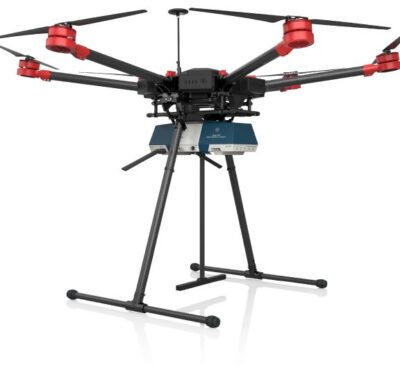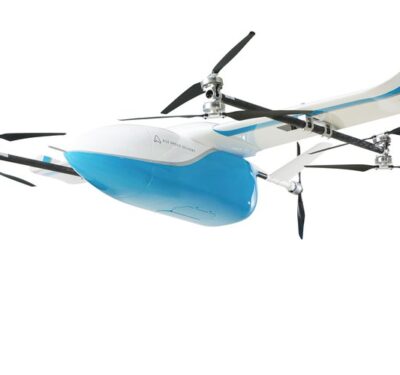
The European Union is set to remedy the lack of coherent regulation that some believe has hindered the European drone industry. The new package of Remotely-Piloted Aircraft System (RPAS) legislation may not be completed by the target date of 2016, but it is coming, and the EU hopes it will further boost an already growing sector.
Part of a Wider Strategy
The EASA Strategy, adopted officially on Dec. 7, 2015 includes three main elements:
• A Commission Communication identifying challenges and opportunities to improve the competitiveness of the EU Aviation sector;
• A proposal to revise the Aviation Safety Regulation to equip the EU’s aviation safety system for future challenges; including a legal framework for the safe use of drones;
• A package of requests to negotiate EU-level air transport agreements with third countries.
EU officials have argued that drones are already a crucial source of growth and jobs, and the fact they are mentioned specifically in the context of three major Strategy objectives will be encouraging to the sector.
The history of the EU’s official interest in drones is short. The European Commission only launched its ‘Roadmap for the Integration of Civil RPAS into the European Aviation System’ at the Paris Air Show in 2013, a year now known within certain European circles as ‘the year of the drone.’ The stated goal , according to the report, was “to ensure that European civil airspace is used in a responsible, considered and effective manner,” and, importantly, “to prepare regulation for implementation by 2016.”
That process is nearing completion, although some officials now say they believe the 2016 target will be missed. Indeed, the final steps may require the most patience, EASA’s Maragakis said.
EASA’s ‘Technical Option’
The part of the proposal that pertains to drones comprises a formal ‘Technical Opinion,’ published on Dec.18, 2015. According to EASA, the document “lays down the foundation for all future work for the development of rules, guidance material, as well as safety promotion to ensure unmanned aircraft are operated safely and their impact on the safety of the aviation system is minimized.”
The Opinion includes 27 concrete proposals for a regulatory framework for low-risk operations of all unmanned aircraft irrespective of their mass [see the annexes to the Opinion for the full proposals]. And it begins by laying out an entirely new way of classifying drones—not on the tasks for which they are intended.
A complicating element for the European drone sector has always been that, under the current Aviation Safety Regulation passed in 2008, only drones with a maximum take-off mass (MTOM) above 150 kg fall under the authority of EASA, while those with a MTOM below 150 kg remain under the authority of national Civil Aviation Authorities (CAAs). The result has been the aforementioned disarray of drone regulations among the various EU countries.
The general consensus today, according to EASA, is that the 150 kg distinction is neither relevant nor helpful to the regulation of this aviation segment and it is more important that any regulation remain coherent, whatever the mass of the system.
Thus EASA’s Technical Opinion is operations-centric, focusing on how a drone will be used rather than on its physical characteristics.
Based on this concept, the Opinion defines a set of rules that EASA says are “proportionate and risk-based.” In other words, safety requirements are set in relation to the risk an activity poses to the operator and to third parties like the general public—the greater the risk the more stringent the requirements.
It doesn’t matter what kind of aircraft it is, Maragakis explained. “The way we have always done it, a particular aircraft is certified based on its own characteristics. Now, instead, we are saying that what matters is how and where you are using that aircraft.”
“We are really changing a way of thinking for the aviation industry in Europe,” he said.
The Opinion establishes three categories of operation: ‘Open’ (low risk), ‘Specific’ (medium risk) and ‘Certified’ (higher risk), with different safety parameters for each. These include such things as how high a drone is to fly and over which kind of terrain or populations. Other considerations include the distance to be maintained between the drone and its pilot and how near to restricted zones it may fly.
Briefly, the ‘Open’ category includes operations where safety is ensured through compliance with operational limitations, mass limitations as a proxy of energy, product safety requirements and a minimum set of operational rules. Here, EASA proposes that aircraft should be equipped with a system limiting performance to acceptable values, for example not allowing it to fly beyond a specified height. Examples include toys or ‘hobbyist’ operations, with or without filming.
In the ‘Specific’ category, authorization by a national aviation authority (NAA) will be required, possibly supported by a qualified entity, following a risk assessment performed by the operator. Examples of such operations could include broadcast media flying a drone in an urban environment.
Finally, in the ‘Certified’ (higher risk) category, requirements will be comparable to those for manned aviation, including oversight by an NAA (to issue of licenses, approve maintenance, operations, training, Air Traffic Management/Air Navigation (ATM/ANS) and aerodrome organizations) and by EASA (design and approval of foreign organizations).
Again, none of the proposed requirements reference the physical characteristics of an aircraft but only what it is doing.
EASA’s new proposals are certainly innovative in their approach, but for many the main element is the fact there will be a single set of rules governing Europe. The regulations will open doors to freer research and development, manufacturing and commercial drone operations throughout the entirety of the EU’s 28 countries.
Who’s Move, and When?
Maragakis said the new EASA proposal for a Basic Regulation—including the drone provisions—has been presented to the European Commission, which is now reviewing and reworking it.
Interestingly, the Commission told Inside Unmanned Systems the proposed rules are in the hands of the European Parliament and Council, which, they say, must debate, amend and adopt the proposed rules before they can come into force.
Wherever the proposed rules actually are, we do know the final step will be adoption by the Council and the Parliament. We also know the higher EU institutions sometimes work in mysterious ways.
Maragakis said it is safe to assume the process will be completed by early 2017. “We don’t know what the exact timing will be for the Council and Parliament—certainly not weeks or months but more likely about a year. So early 2017 would be our expectation.”
There is a slight danger that the item could become a point of contention.
“Sometimes something like this can be used as a bargaining chip,” Maragakis said. “At that level, politics can come into it, especially when we talk about certain subjects—border security, for example— subjects that are already political and contentious by nature. That is not so much the case here; this is an area where more or less all of us agree this is a priority.”






